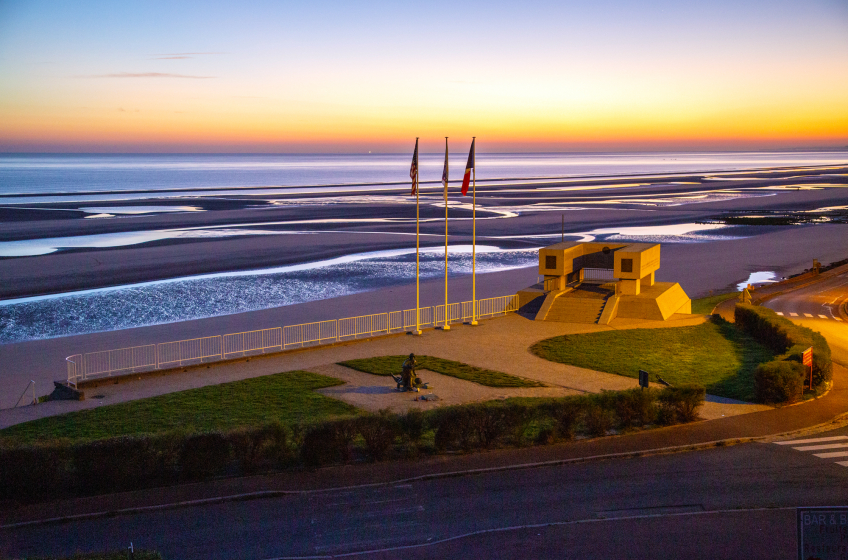Discover Omaha Beach
Omaha Beach, located on the northern coast of Normandy, France, is one of the five designated landing sites for the Allied invasion during D-Day on June 6, 1944. This beach, stretching over 5 miles between Sainte-Honorine-des-Pertes and Vierville-sur-Mer, witnessed some of the fiercest fighting and highest casualties of the Normandy landings.
Omaha Beach Memorial Museum visitor information and opening times
Historical Significance
Omaha Beach was assigned to the United States Army, with the primary landing force consisting of the 1st and 29th Infantry Divisions. The objective was to secure the beachhead and advance inland to link up with British forces from Gold Beach to the east and American forces from Utah Beach to the west. Due to strong German fortifications, rough seas, and navigational challenges, the landings at Omaha Beach encountered significant difficulties, resulting in high casualties. Despite these obstacles, the bravery and determination of the soldiers eventually led to the establishment of a crucial beachhead, paving the way for the liberation of Western Europe.
Visiting Omaha Beach
The site offers several key points of interest for visitors, providing a comprehensive understanding of the events of D-Day and their broader historical context.
1. Omaha Beach Memorial Museum: Located near the landing site in Saint-Laurent-sur-Mer, the Omaha Beach Memorial Museum provides a detailed account of the D-Day landings through exhibits featuring artifacts, photographs, personal accounts, and military equipment. The museum also offers a film presentation that gives visitors an overview of the events of June 6, 1944.
2. American Cemetery and Memorial: The Normandy American Cemetery and Memorial, situated on a cliff overlooking Omaha Beach, is one of the most poignant sites in the region. The cemetery contains the graves of 9,388 American soldiers who lost their lives during the Normandy campaign. The memorial includes a chapel, a reflecting pool, and a series of maps and narratives explaining the military operations. A visitor centre provides additional historical context and personal stories of the soldiers buried there.
3. German Bunkers and Defensive Positions: Scattered along Omaha Beach are several preserved German bunkers, pillboxes, and defensive positions. These structures offer insight into the formidable German defenses that the Allied forces had to overcome. Informational panels provide historical context and details about the battle.
4. Les Braves Memorial: Erected on the sands of Omaha Beach, the Les Braves Memorial consists of three stainless steel sculptures by French artist Anilore Banon. The sculptures symbolize the courage, dedication, and strength of the soldiers who landed on the beach. This striking memorial serves as a tribute to the bravery and sacrifice of the Allied forces.
Practical Information
Accessibility: Omaha Beach is accessible by car, with parking available near key sites such as the museum and cemetery. It is located about a 30-minute drive from Bayeux, a town known for its medieval tapestry depicting the Norman Conquest.
Opening Hours: The Omaha Beach Memorial Museum typically opens from 10:00 AM to 6:00 PM, but it is advisable to check the official website for current hours and any special events or closures. The Normandy American Cemetery is open daily from 9:00 AM to 5:00 PM, except on December 25 and January 1.
Admission Fees: There is an admission fee for the Omaha Beach Memorial Museum, with discounts for students, seniors, and groups. The Normandy American Cemetery and its visitor center are free to visit.
Facilities: The museum and visitor centre offer restrooms, gift shops, and educational materials. Guided tours are available for those interested in a more detailed exploration of the site.
Shortlist
- Your Shortlist is empty

